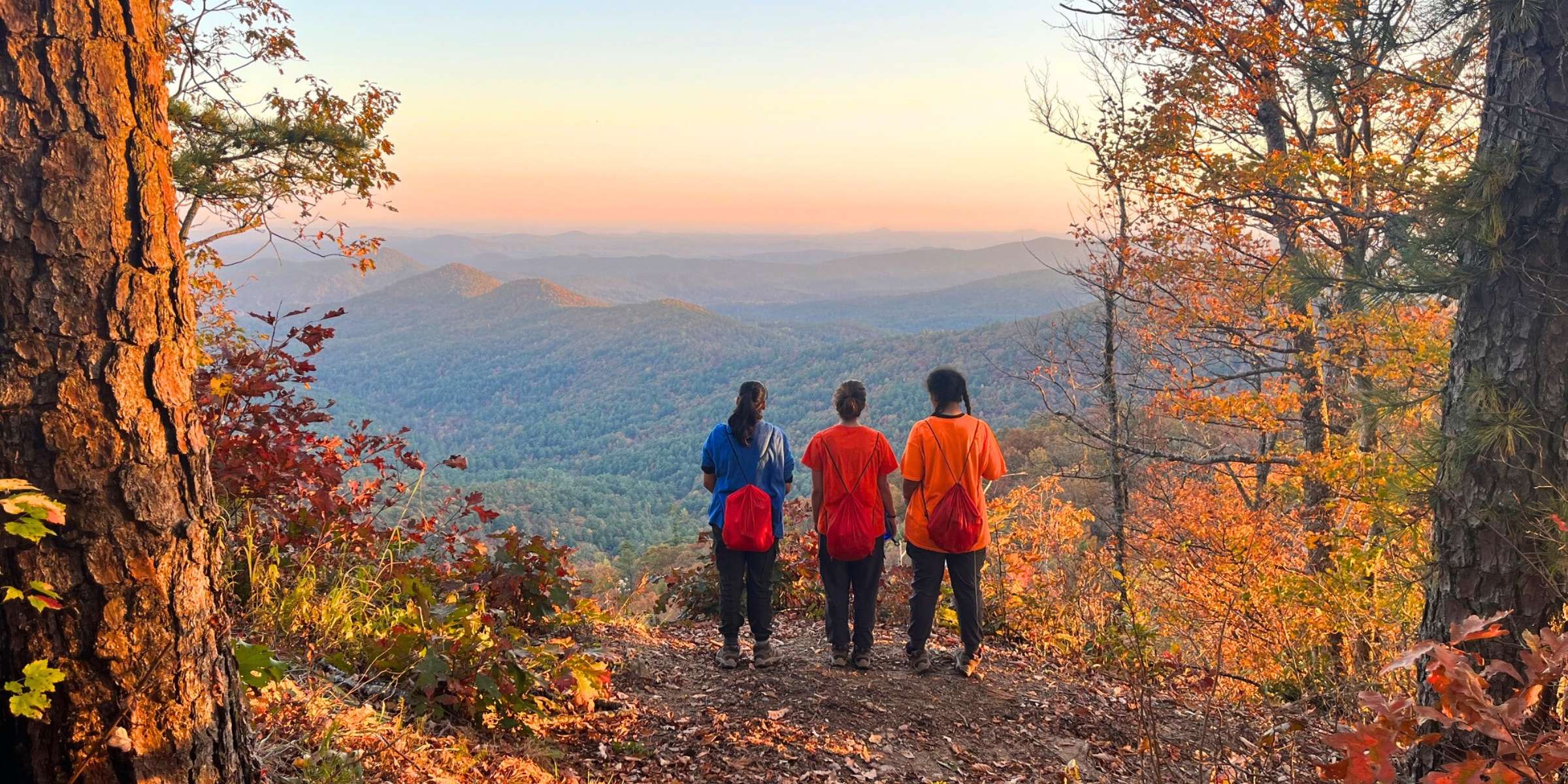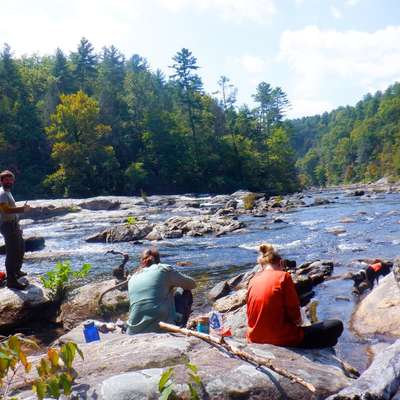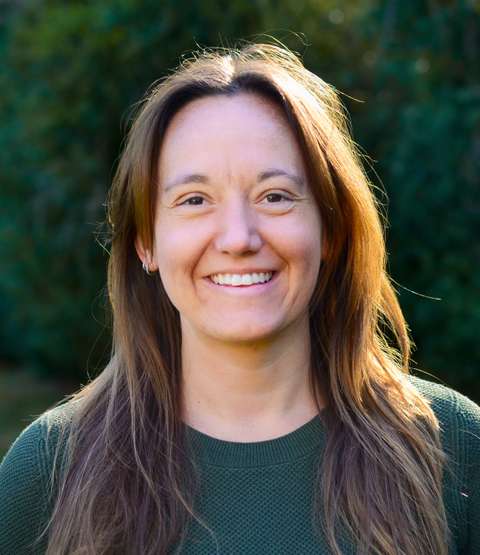
Q&A with adolescent girls' therapist, Sarah James, LPC, CAADC

Q: Tell us about yourself. What’s your background? How did you come to work at Blue Ridge?
A: I started at Blue Ridge as a field instructor in January 2018. I was a provisionally licensed therapist fresh out of grad school. I thought “I’ll do this for a few months to gain experience” and then I loved it so much I stayed for two years. I left at the end of 2019 to work as a therapist at a residential farm program for adults with severe and persistent mental illness. After a few years there, I had an opportunity to work as a primary therapist at another wilderness therapy program. Another few years later, I am ecstatic to have come full circle and returned “home” to Blue Ridge.

Q: What’s the typical student profile in your group (G4)?
A: The students who find themselves in my group are complex and diverse, but the common thread that unites them is that they have become masterful at avoiding or masking their pain and discomfort. Some common behaviors that bring them here are substance abuse, school refusal, social isolation, technology addiction, promiscuity, and self-harm. I view these behaviors as attempts to alleviate painful emotions associated with loneliness, poor self-esteem, fear, and powerlessness. The problem is that these behaviors are shortcuts which inevitably escalate and leave the original wounds to fester and intensify. The students in my group are attempting to differentiate and gain independence, but their unhealthy coping has diverted them from the path of healthy adolescent identity development.

Q: What would you consider to be the power of Wilderness Therapy? Why do you choose to work in the wilderness, specifically?
A: I choose to work in the wilderness because there is no other environment that facilitates the level of empowerment that I witness my students accomplishing on a weekly basis. Every week I walk into my group and my students are excited to tell me about the fires they created, the assertive letters they wrote to their parents, the vulnerable conversations they had with staff and peers, or the challenging hikes they overcame.
There are endless opportunities for teachable moments in the wilderness, but the learning doesn’t come from adults lecturing them; it arises naturally through developing the courage and resilience to tolerate the discomfort of stepping outside one’s comfort zone. When adolescents are given space and time away from the distractions of everyday life, they are provided with more clarity surrounding what they can and can’t control. Within that dilemma is an opportunity to discover authentic autonomy. Taking responsibility for one’s emotions, communication, and choices leads to a far more fulfilling sense of independence than the shortcuts they were taking prior to their time in the wilderness. To me, there is no greater honor than getting to witness and help facilitate a young person’s journey of finding herself.

Q: What’s your personal approach as a therapist? Are there any specific modalities that you use? What are your areas of expertise?
A: My approach is attachment based, trauma informed, and family systems focused. I seek to empower adolescents to understand themselves and reevaluate the effectiveness of their choices. I strive to create a culture of safety in my group in which students can practice new ways of being, explore their values, and discover more effective methods for meeting their needs. My style is one of “fierce love”-- I lead with compassion while holding others accountable to the belief that they are capable of resiliency, integrity, and authenticity.
I am dual-licensed in clinical mental health counseling and addictions counseling. I am certified as an Adoption Competent Therapist and I am a practitioner of Attachment-Based Family Therapy. I am trained in Natural Flow EMDR and I seek ongoing continuing education in the areas of trauma, neurodiversity, and substance abuse.

Q: Can you talk a little bit about how you build relationships with your students’ parents?
A: My approach to working with parents and caregivers parallels my work with their teens; my goal is to help families exit cyclical power struggles and reimagine themselves as a team facing common goals and challenges. I start from a place of empathy, recognizing that sending a child away from home is an incredibly difficult decision. I try to communicate how seriously I take the responsibility of caring for someone else’s child and I share my goal of providing them the best care possible.
I seek to understand the family’s history that led them to needing this level of support. Many parents comment in our initial calls that they are amazed and relieved at how clearly I am seeing their child– like they brought a car to the mechanic and it’s actually making the concerning noise. From there, we are able to develop a firm foundation of rapport from which I am able to start offering feedback and coaching on how to better understand and relate to their child.

Q: What does the word “success” mean to you?
A: Success definitely looks unique for each student and family that I work with, but my hope is that students leave my group looking and feeling more empowered than when they arrived. I hope they come out knowing they are capable of more than they originally believed. I hope they feel equipped to communicate more effectively about their emotions and needs. I hope they have a stronger sense of their values and how they want to show up in the world. I hope the whole family walks away believing that they understand each other better and feeling more confident in their ability to communicate with and support each other.

Q: What do you do in your free time? Where can we find you when you're not here in Clayton?
A: Outside of work you can find me playing endless amounts of fetch with my high-energy dog, spending cozy time reading and cuddling with my lazy cat, or exploring the mountains of Western NC with my husband. I enjoy spending time in my garden, challenging myself in the gym, and starting but not completing various crafts and DIY projects around my house.

Sarah James, LPC, CAADC
"I believe that through a lens of curiosity, we can find the root of most problematic behaviors. I seek to empower adolescents to understand themselves and reevaluate the effectiveness of their choices."
